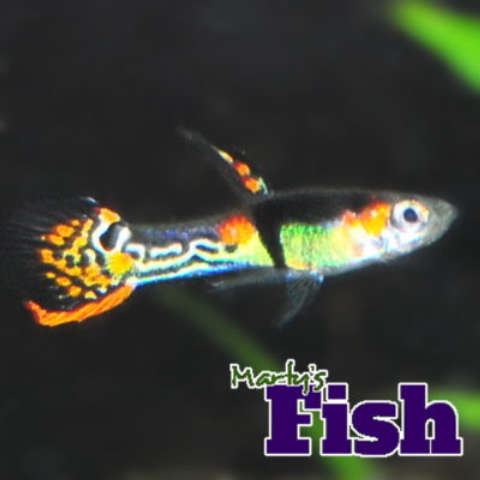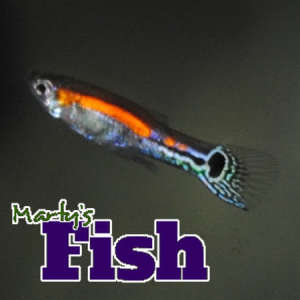New Endler Strains
I am always amazed at the number of new Endlers that are being developed by breeders.
We have been working on several new strains. We hope be able to be offer more unique strains over the next couple of years.
While I’m excited about the new strains being developed from existing stock I am even more excited about those Endlers that are currently being discovered in the wild.
Newly Discovered Wild Endlers
Fortunately there have been several Endler examples discovered over the last couple of years. New Endler examples are discovered all the time.
Not that all the new crosses and hybrids aren’t beautiful, I just feel that it is very important to preserve as the beautiful specimens found in this quickly evolving species as they were found in the wild.
Although there are many rumors that Endlers are now extinct in the wild it appears that the rumors are far from being fact.
Some of the examples that I have seen recently appear to be hybrids while many of them appear to be pure Endlers.
Who’s Discovering Them?
Armando Pou
Most of the Endler strains that are currently available in the United States were introduced into the hobby by Adrian Hernandez. These strains were developed by Endlers collected by Armando Pou. Our first Endler strains came directly from Adrian Hernandez and we are grateful for his work and that of Armando Pou.
We haven’t seen any new examples recently but that doesn’t mean they aren’t collecting any. We have noticed however that Adrian Hernandez continues to work on many new and beautiful Endler strains both pure and hybrid.
Phillip Voisin
Phillip Voisin is collecting, in my opinion, some of the most amazing Endlers being discovered today. The beautiful examples he shares of his most recent discoveries are absolutely gorgeous. Many of these beautiful examples have not yet been bred into stable strains. The beautiful Blue Star Endler strain came from Phillip Voisin and is sometimes referred to as Blue Voisin Endlers.
Interestingly there seems to be some debate as to where the most pure Endlers seem to be. It appears that Adrian Hernandez believes the most pure Endlers are found in the Cumana region of Venezuela while Phillip Voisin seems to believe that there are more pure Endlers in the Campoma region of Venezuela.
To be honest I really don’t care if they are pure Endlers or natural Endler hybrids. What is important to me is that these beautiful gems be preserved as they are for hobbyists around the world to enjoy. Of course conservationists may disagree with me but I’m looking at it from the standpoint of a tropical fish hobbyist.
Jose Flores

Recently I’ve been fortunate enough to see examples of Endler specimens being captured by Jose Flores who resides in the Cumana region of Venezuela. He has been sharing quite a few example of his recent captures some of them captured only days ago.
Many of these beautiful Endler examples are similar to the Black Bar and Lime Green Endler strains developed by Adrian Hernandez. One of the photos I saw recently had a vertical back line or “black belt” similar to the one found on many of our Snakeskin Orchid Endlers.
To the best of my knowledge Jose has not yet bred any of them into strains to offer to hobbyists however it’s great to see that there are still some beautiful specimens living in the wild.
Endlers of the Future
With all these beautiful new examples of wild Endlers being discovered I’m excited to see what beautiful examples of Endlers will be offered to hobbyist in the next few years and hopefully for many years to come.
Hopefully many of these wild examples can be preserved and hopefully some of their habitat can be saved.


Personally, I have always thought to much emphasis is made by Poecilia reticulata wingei, i.e. Endler breeders in making claims of “strain” distinctions. They are simply “phenotypes” derived from specific combinations of sex-link and / or autosomal genes prevalent in individual population core areas. The same can be found in reticulata populations. This, as a result of environmental conditions and / or predation regimes. Distinct, isolated or prevalent maternal MtDNA lineages in wingei does not qualify for speciation from a traditional standpoint. The same can also be found in reticulata populations.
Prevalence of a specific phenotype is often maintained in a “core” area. This prevalence weakens as you travel further away from the core. Specific traits, sex-link and autosomal, are conserved between reticulata and wingei populations. While others are isolated among reticulata and wingei populations. Yet, others are indicative of hybridization between reticulata and wingei “core” populations. Diversification is often the result of autosomal genes, such as Purple Body (Pb). While Pb is the “norm” in reticulata populations (pbpb, Pbpb, PbPb), non-Purple Body (pbpb) is the “norm” in wingei populations. Presence of Pbpb or PbPb is indicative of hybrid stocks in wingei.
It’s great to hear from you, Alan. I wholeheartedly agree with you when looking at Endlers from a genetic perspective.
There is so much diversity both genetically and in appearance within the species that the term “strain” has been used to describe the many phenotypes which help to indicate where they came from in some cases. This helps hobbyists keep some of the different phenotypes distinct and separate from other Endler phenotypes.
This is especially important if a hobbyist wants to raise phenotypes that are genetically similar as well as similar in appearance to those at locations where they were captured.
This is helpful from a hobbyist perspective as there may be several different phenotypes found in the same locations. Each phenotype may be genetically different ie: blue, green or red Endlers.
When it comes to Endlers, the term “strain” simply describes different phenotypes that are available in the hobby. These “strains” may be similar to those found in the wild or be a set phenotype unique to captive-bred Endlers.